Indiana Glass is a renowned maker of vintage glassware, known for its intricate patterns and craftsmanship․ This guide helps identify popular Indiana Glass patterns, aiding collectors in recognizing and appreciating their pieces․ From pressed glass to Carnival designs, Indiana Glass offers a rich history and diverse styles․ Discover the heritage behind these timeless creations and learn to distinguish their unique characteristics․ This section sets the foundation for understanding the beauty and significance of Indiana Glass patterns․

1․1 Overview of Indiana Glass
Indiana Glass is a celebrated name in vintage glassware, admired for its intricate designs and exceptional craftsmanship․ Established in Dunkirk, Indiana, the company garnered fame for its diverse range of glass products, including pressed glass, Carnival glass, and Depression-era pieces․ Known for patterns like Diamond Point, Honeycomb, and Tiara, Indiana Glass captivated collectors with its artistic flair and historical significance․ This overview introduces the essence of Indiana Glass, highlighting its notable patterns and enduring appeal in the world of collectibles․ By understanding these elements, enthusiasts can better appreciate the craftsmanship and legacy behind each piece․ This section lays the groundwork for exploring the intricate details of Indiana Glass patterns and their identification․

History of Indiana Glass Company
Indiana Glass Company, established in Dunkirk, Indiana, produced high-quality glassware from 1898 onward․ Known for pressed glass, Carnival glass, and Depression-era designs, the company became famous for intricate patterns like Diamond Point and Honeycomb, showcasing exceptional craftsmanship and artistic flair․ Its legacy endures among collectors and enthusiasts of vintage glassware․
2․1 Founding and Evolution
Indiana Glass Company was founded in 1898 in Dunkirk, Indiana, as part of the National Glass Company․ Initially focusing on utilitarian glassware, the company shifted to producing decorative and patterned glass in the early 20th century․ By the 1920s, Indiana Glass had gained prominence for its Carnival Glass, a popular style featuring vibrant, iridescent colors․ The company’s evolution included expanding its product lines to include Depression Glass and other intricate designs, which became highly sought after by collectors․ This transformation solidified Indiana Glass as a leader in the glass industry, blending functionality with artistic flair․
2․2 Significant Milestones
Indiana Glass Company reached several milestones during its operational years․ In the early 1900s, it became known for producing Carnival Glass, a vibrant, iridescent style that gained widespread popularity․ By the 1920s, the company shifted focus to Depression Glass, creating iconic patterns like Diamond Point and Honeycomb․ The 1950s marked the introduction of the Tiara line, which featured elegant, intricate designs․ Indiana Glass also produced Sandwich Glass, a style characterized by layered patterns․ These milestones highlight the company’s adaptability and innovation, cementing its reputation as a leader in the glass industry․ Each era brought unique contributions to the world of collectible glassware, making Indiana Glass patterns highly sought after by enthusiasts today․
Types of Indiana Glass
Indiana Glass produced various types, including pressed glass, Carnival Glass, and Depression Glass․ Each style features unique designs and techniques, reflecting the company’s craftsmanship and innovation․Pressed glass, known for its molded patterns, was a staple, while Carnival Glass showcased vibrant, iridescent colors․ Depression Glass, with its delicate designs, remains highly collectible․ These types highlight Indiana Glass’s versatility and artistic flair, making them treasured by collectors and historians alike․
3․1 Pressed Glass
Pressed glass, a hallmark of Indiana Glass, features intricate designs crafted using molds․ Popular in the early 20th century, it boasts delicate patterns like the honeycomb motif, seen in a 9-inch candy dish․ This technique allowed mass production of functional and decorative items, from goblets to plates․ Collectors prize pressed glass for its artistic appeal and historical significance․ Identification involves examining mold marks and pattern details, ensuring authenticity․ The honeycomb example, with its specific dimensions, highlights Indiana Glass’s attention to detail and craftsmanship, making pressed glass a cherished part of any collection․
3․2 Carnival Glass
Carnival Glass, produced by Indiana Glass, is a vibrant and collectible type of glassware․ Known for its iridescent, multicolored finish, it was created using metallic coatings applied to the glass․ Indiana Glass introduced Carnival Glass in the early 20th century, with patterns like the Grape design, which became highly popular․ The company expanded its Carnival line to include over 32 items, ranging from bowls to plates․ Collectors prize Carnival Glass for its striking appearance and historical significance․ Identification involves recognizing the characteristic iridescent sheen and specific patterns; The Grape pattern, with its embossed detailing, is particularly sought after․ Carnival Glass remains a cornerstone of Indiana Glass collections, showcasing the company’s innovative craftsmanship during its peak production years․
3․3 Depression Glass
Depression Glass, produced by Indiana Glass during the 1920s to 1940s, is a popular collectible known for its vibrant colors and intricate patterns․ Made from soda-lime glass, it was affordable and accessible to the masses during the Great Depression․ Indiana Glass created iconic patterns like American Sweetheart and Mayfair, featuring delicate floral motifs․ These pieces were often used for everyday dining, making them both functional and decorative․ The glass was produced in a variety of colors, including pink, green, and yellow, with clear glass being less common․ Collectors appreciate the craftsmanship and nostalgia associated with Depression Glass, which remains a cherished part of Indiana Glass’s legacy․ Its thin walls and distinctive patterns make it easily recognizable to enthusiasts․
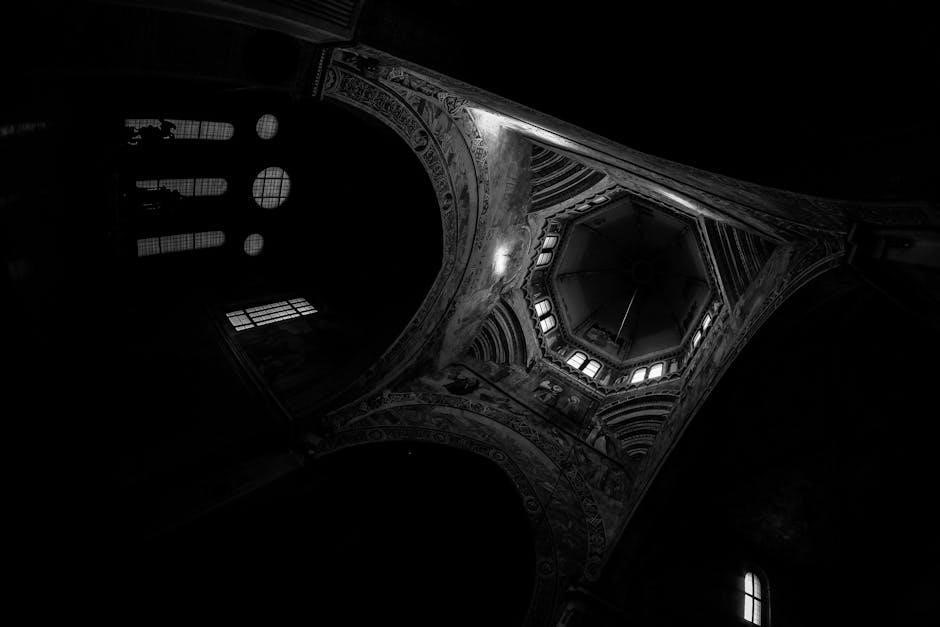
Identifying Indiana Glass Patterns
Identifying Indiana Glass patterns involves examining motifs, colors, and maker marks․ Use online guides and catalogs to recognize specific designs like Feather and Diamond Point effectively․
4․1 How to Identify Patterns
Identifying Indiana Glass patterns begins with examining the design elements and colors․ Look for maker marks, such as logos or signatures, often found on the base or back․ Study the pattern details, like the rayed star in Feather or the embossed Grape design in Carnival Glass․ Compare pieces with reference guides, such as the Indiana Glass Pattern Identification Guide, to match motifs․ Volume 1 of Indiana Glass catalogs early pressed patterns from 1898 to 1926, aiding in recognition․ Online communities and collector forums also provide valuable insights․ By combining visual inspection with historical documentation, enthusiasts can accurately identify Indiana Glass patterns and appreciate their craftsmanship and heritage․
4․2 Common Patterns
Indiana Glass produced a variety of popular patterns that are highly sought after by collectors․ The Feather pattern, featuring a rayed star design, is among the most recognizable․ Honeycomb, with its distinctive hexagonal cells, is another favorite․ The Tiara pattern, known for its intricate embossing, is often found in amber glass․ Diamond Point, characterized by sharp geometric motifs, adds a touch of elegance․ Other common patterns include the Grape design, often seen in Carnival Glass, and the Hobnail pattern, with its textured, nodular surface․ These designs, along with Sandwich Glass and others, showcase Indiana Glass’s versatility and artistry․ Each pattern offers unique charm, making them treasured additions to any collection․
4․3 Specific Features
Indiana Glass patterns often exhibit distinct features that aid in identification․ The Feather pattern, for instance, is characterized by a rayed star design, sometimes extending onto the foot of footed items․ Honeycomb patterns feature repeating hexagonal cells, creating a textured, three-dimensional appearance․ Tiara patterns are known for their intricate embossing, often in amber glass․ Diamond Point patterns showcase sharp, geometric motifs, adding a touch of elegance․ Specific features like mold marks, ridge lines, and color variations, such as ruby or amber hues, are also common․ These details, along with pattern consistency and glass clarity, are essential for accurate identification․ Recognizing these features helps collectors distinguish Indiana Glass from other manufacturers and appreciate its unique craftsmanship․
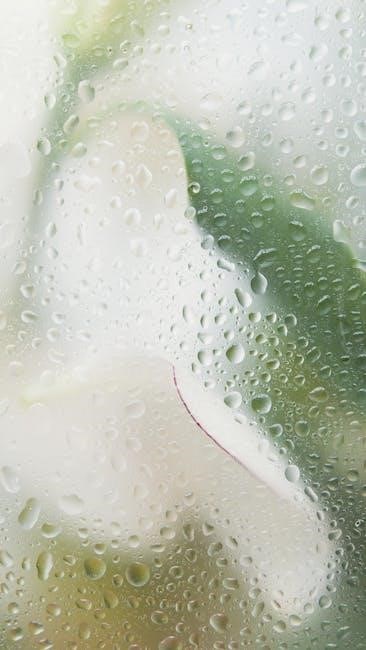
Guide to Popular Patterns
Indiana Glass features iconic patterns like Feather, Diamond Point, Honeycomb, and Tiara․ These designs, with their unique motifs and colors, are highly sought after by collectors․
5․1 Feather Pattern
The Feather pattern, produced by Indiana Glass, is a striking design featuring a rayed star motif, often visible on the underside of bowls and footed items․ This pattern gained popularity for its elegant simplicity and intricate details․ It was part of Indiana Glass’s early pressed glass collection, manufactured from 1898 to 1926․ The Feather pattern is highly sought after by collectors due to its unique aesthetic and historical significance․ Its presence in various forms, such as bowls and plates, makes it a versatile addition to any collection․ The design’s subtle yet distinctive elements make it a hallmark of Indiana Glass’s craftsmanship during its early years․
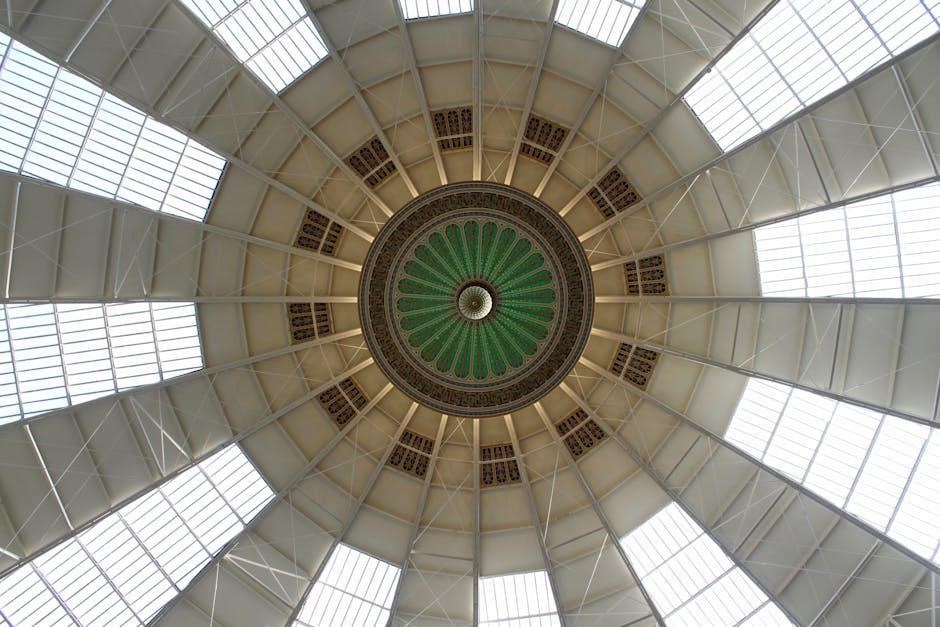
5․2 Diamond Point Pattern
The Diamond Point pattern, produced by Indiana Glass, is a classic design featuring sharp, geometric lines and a polished finish; It was available in both Ruby and Clear colors, with the Ruby version being particularly sought after by collectors․ This pattern was part of Indiana Glass’s mid-century production, dating back to the 1960s․ The Diamond Point design is known for its simplicity and timeless appeal, making it a favorite among vintage glass enthusiasts․ Its clean lines and vibrant colors add a touch of elegance to any setting․ Collectors often look for pieces in excellent condition to complete their sets, as the Diamond Point pattern remains a staple in Indiana Glass collections․
5․3 Honeycomb Pattern
The Honeycomb pattern by Indiana Glass is a beloved design characterized by its textured, hexagonal motifs, resembling the cells of a honeycomb․ This pattern was often used in pressed glass items like candy dishes, which featured a length of 9 inches, a height of 1․25 inches, and a width of 7․5 inches․ The Honeycomb pattern is cherished for its tactile appeal and nostalgic charm, making it a favorite among vintage glass enthusiasts․ Collectors appreciate the pattern’s intricate details and the way it adds a touch of warmth to any setting․ While minor imperfections like bubbles or mold marks can be present, they often add to the piece’s character, showcasing the craftsmanship of Indiana Glass․
5․4 Tiara Pattern
The Tiara pattern by Indiana Glass is a highly sought-after design, particularly in its Amber hue․ This pattern features a regal, crown-like motif, creating a sophisticated and elegant appearance․ Tiara pieces are known for their versatility, ranging from goblets to plates and other servingware․ Collectors often seek out complete sets to showcase their beauty and craftsmanship․ The Tiara pattern is a testament to Indiana Glass’s ability to blend functionality with artistic flair․ Its timeless appeal continues to captivate enthusiasts, making it a prized addition to any vintage glass collection․ The intricate details and rich colors of the Tiara pattern highlight the company’s dedication to producing high-quality glassware․

5․5 Other Notable Patterns
Beyond the well-known Feather, Diamond Point, and Honeycomb patterns, Indiana Glass produced several other notable designs․ The Grape pattern, for instance, is a striking Carnival Glass design featuring embossed clusters of grapes and leaves․ Another popular choice is the Hobnail pattern, characterized by its textured, bumpy surface, often found in clear or colored glass․ Indiana Glass also created the Sandwich pattern, known for its layered look with a clear glass middle layer․ These patterns showcase the company’s versatility and creativity․ Collectors often seek these pieces for their unique aesthetics and historical significance․ Each design reflects Indiana Glass’s commitment to quality and artistry, making them treasured additions to any collection․
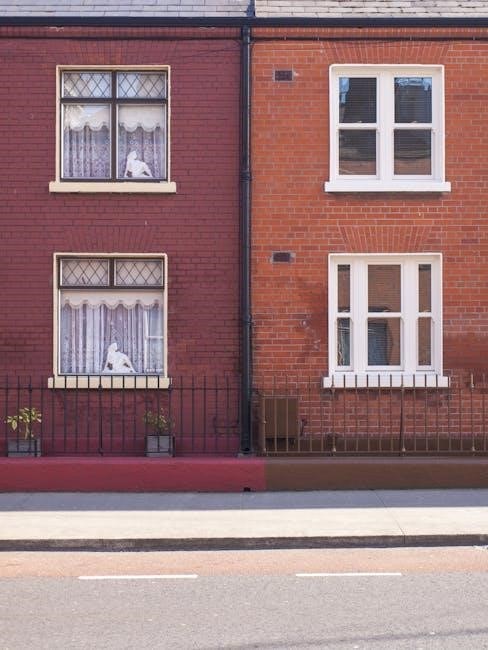
Collecting Indiana Glass
Collecting Indiana Glass is a popular hobby, offering a wide range of patterns and styles to pursue․ From vintage Carnival Glass to Depression-era designs, each piece showcases exceptional craftsmanship and historical charm, making it a rewarding endeavor for enthusiasts․
6․1 Starting a Collection
Starting an Indiana Glass collection begins with understanding the various patterns and styles available․ Researching through guides like the Indiana Glass Pattern Identification Guide can help identify pieces like Diamond Point and Honeycomb; Begin by focusing on specific patterns or eras to build a cohesive collection․ Visit antique shops, auctions, and online marketplaces to find vintage items․ Consider condition, rarity, and historical significance when selecting pieces․ Join collector communities for tips and support․ Keep records of your purchases and their history to enhance your collection’s value․ With patience and dedication, you can curate a beautiful and meaningful Indiana Glass collection that reflects its rich craftsmanship and heritage․
6;2 Care and Maintenance
Proper care and maintenance are essential for preserving the beauty and value of Indiana Glass pieces․ Avoid exposure to harsh chemicals or abrasive cleaners, as they can damage the glass surface․ Use mild soap and warm water for cleaning, and dry thoroughly with a soft cloth to prevent water spots․ Store items in a cool, dry place away from direct sunlight to avoid fading or discoloration․ For delicate or patterned pieces, consider using padded storage boxes to prevent scratching․ Regular dusting with a gentle cloth will keep your collection looking its best․ Handle items carefully to avoid chips or breaks, and avoid stacking pieces to prevent damage․ By following these guidelines, you can ensure your Indiana Glass collection remains pristine for years to come․

Determining Value
Determining the value of Indiana Glass involves assessing rarity, condition, and demand․ Popular patterns like Diamond Point and Feather often command higher prices․ Consult experts or price guides for accurate appraisals․
7․1 Factors Affecting Value
Several factors influence the value of Indiana Glass pieces․ Rarity is a key determinant, with limited-production patterns like Tiara and Carnival Glass commanding higher prices․ Condition plays a crucial role; items in excellent shape with minimal wear fetch premium amounts․ Demand also fluctuates, with certain patterns experiencing resurgence in popularity․ Age is another consideration, as older pieces from the early 20th century are often more valuable․ Additionally, provenance and historical significance can elevate worth․ Market trends and collector interest further impact pricing․ Understanding these elements helps collectors and sellers accurately assess the value of Indiana Glass items․
7․2 Pricing Guide
Pricing Indiana Glass pieces varies widely based on factors like rarity, condition, and demand․ Common patterns, such as Diamond Point and Feather, typically range from $20 to $100․ Rarer designs, like Tiara and Honeycomb, can fetch between $100 and $500․ Carnival Glass items, especially in vibrant colors, often sell for $200 to $1,000 or more․ Larger or more intricate pieces, such as serving dishes or pitchers, tend to be pricier than smaller items․ Collectors should research current market trends and consult experts or price guides for accurate valuations․ Online marketplaces and antique shops also provide insights into fair pricing for Indiana Glass collectibles․
Dating Indiana Glass
Indiana Glass can be dated using backstamps, production periods, and pattern introductions․ Early pieces often lack markings, while later items may feature specific logos or dates․ The Indiana Feather pattern, for example, was introduced in the early 20th century, aiding collectors in determining its age․ Historical records and catalogs also provide valuable insights into production timelines, helping enthusiasts accurately date their Indiana Glass pieces․ This method ensures a precise understanding of each item’s origins and historical significance․
8․1 Methods of Dating
Dating Indiana Glass involves analyzing backstamps, production timelines, and pattern introductions․ Many pieces feature distinct marks or logos, aiding in identification․ Historical records and catalogs provide insights into when specific patterns were produced․ For example, the Indiana Feather pattern was introduced in the early 20th century․ By cross-referencing these details, collectors can determine the era of their pieces․ Additionally, the condition and design of the glass can offer clues about its age․ Using a combination of these methods ensures accurate dating and helps enthusiasts understand the historical context of their Indiana Glass items․ This approach is essential for collectors seeking to authenticate and value their acquisitions․
8․2 Historical Timeline
Indiana Glass Company, established in 1898, began producing glassware that quickly gained popularity․ By the early 20th century, patterns like Indiana Feather emerged, featuring intricate designs․ The 1920s saw the introduction of Carnival Glass, with vibrant colors and unique textures․ During the Depression era, Indiana Glass created practical yet elegant Depression Glass pieces․ In the mid-20th century, the Tiara pattern became iconic, known for its sophistication․ The company continued innovating until its operations ceased in 2002․ This timeline highlights key periods in Indiana Glass history, aiding collectors in understanding the evolution of its patterns and designs․ Each era reflects changing tastes and techniques, making Indiana Glass a cornerstone of collectible glassware history․
Resources for Identification
Discover Indiana Glass patterns through the Indiana Glass Museum, collector communities, and resources like David Doty’s Carnival Glass website for detailed identification guides and historical insights․
9․1 Online Resources
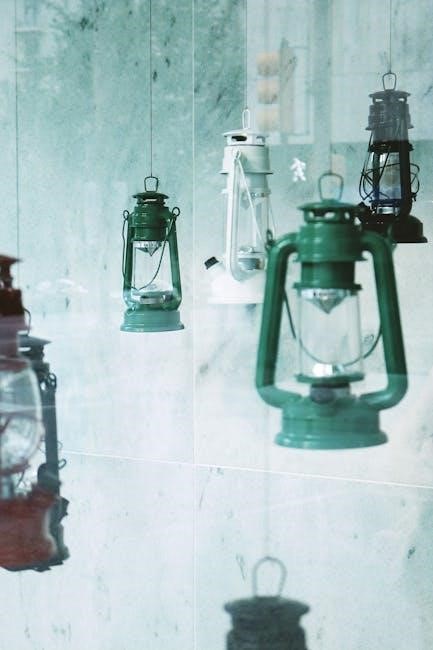
Online resources are invaluable for identifying Indiana Glass patterns․ Websites like David Doty’s Carnival Glass and the Indiana Glass Museum offer extensive databases and images․ Collector communities and forums provide platforms for sharing knowledge and seeking expert opinions․ Additionally, the Indiana Glass Pattern Identification Guide is a comprehensive tool for recognizing specific designs․ These digital resources are accessible, updated regularly, and cater to both novice and experienced collectors․ They often include detailed descriptions, historical context, and high-quality visuals to aid in accurate identification․ Leveraging these online tools enhances the collector’s ability to distinguish Indiana Glass pieces and appreciate their craftsmanship and heritage․
9․2 Books and Catalogs
Books and catalogs are essential resources for identifying Indiana Glass patterns․ A four-volume series by Indiana Glass provides detailed insights into their products, with Volume 1 covering 1898–1926 and Volume 3 focusing on 1951–1969․ These books include high-quality images and descriptions of patterns, making them invaluable for collectors․ Additionally, the Indiana Glass Pattern Identification Guide offers a comprehensive overview, featuring black-and-white illustrations of various designs․ These publications are indispensable for understanding the history, colors, and unique features of Indiana Glass․ They serve as a foundation for collectors, offering both historical context and practical identification tools․ By referencing these books, enthusiasts can gain a deeper appreciation for the craftsmanship and legacy of Indiana Glass patterns․
Indiana Glass offers a rich legacy of beautiful patterns, making it a treasured collectible․ This guide provides essential insights, helping enthusiasts identify and appreciate its timeless designs․
10․1 Final Thoughts
Indiana Glass patterns are a testament to timeless craftsmanship and design․ From feather motifs to honeycomb details, each piece tells a story of artistic excellence․ Collectors can find joy in identifying these iconic designs, leveraging resources like pattern guides and collector communities․ The legacy of Indiana Glass continues to inspire, offering a bridge between the past and present․ Whether you’re a seasoned collector or just starting, these patterns promise enduring beauty and historical significance․ Embrace the journey of discovery, and let the elegance of Indiana Glass enrich your collection and appreciation for vintage glassware․